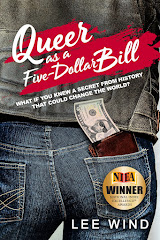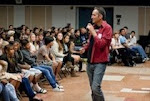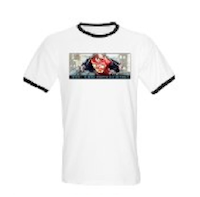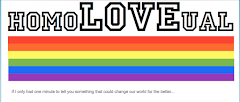 |
| Mary E. Cronin (left) with her wife and co-presenter, Bonnie Jackman |
The
recent “Dear Author” appeal on this blog shined a light on the need for more queer and questioning characters in literature for young people. There is a demand for it!
But how do writers go about meeting that need at the middle-grade level? How can we create space in our stories for those characters to be who they are (and for our readers to recognize themselves), before many of them are ready for romantic connections?
That was the heart of the workshop I recently presented with my wife, middle school guidance counselor Bonnie Jackman, at the New England SCBWI conference in Springfield, Mass. It was heartening and exciting to tackle this topic with workshop participants—dedicated writers who are writing queer characters now, or want to do so in future works—and they want to do it well!
First off, I have to admit it was fun to present on this topic as a married couple! Bonnie is a seasoned middle school counselor, and I have been writing for years. It was the perfect overlap of our worlds—professional and personal.
Second, we started the workshop by highlighting the context in which today’s eleven year olds have grown up. Gay marriage became legal in Massachusetts the same year they were born (2004). Since then it has become legal in 36 states and the District of Columbia. President Obama was elected when they were age four; and the “It Gets Better” project was launched when they were six, to combat suicides by teens who were gay or suspected of being gay. Their world is very, very different from the world we grew up in.
We then delved into the various layers in a middle-grader’s life, and how those layers are rich territory in which to portray a queer or questioning character:
• What is the character’s perception of themselves at this age? Do they feel different? Have they put a name to that difference? Are they desperately trying to fit in to dominant heterosexual culture, or are they beginning to enjoy being different from the mainstream?
• Family is a dominant force in a middle schooler’s life (for better or worse!). A character’s family might be provincial and traditional, or worldly and wild. There may be GLBT people in the character’s family, or they may have no role models or reference points at all. These factors will have a huge impact on a character’s trajectory.
• School may be a refuge in a time of confusion (think of like-minded peers or super-cool adult role models) … or it could be a major stressor (bullying, fear of being different, peer pressure).
• Peer relationships—so much potential for writers here! Consider characters who develop a crush on a friend; characters who are trying to “blend in” by faking it; questioning/queer kids who find each other and form supportive friendships… the possibilities are rich and endless!
We shared middle-school recollections of some authors in the presentation, such as Steven dos Santos: “It was definitely a chaotic time because, while I wasn’t necessarily aware of the full implications of my orientation at the time, I definitely developed crushes on classmates of the same gender, looked forward to spending time with them, sitting next to them in class… there was no one I could confide in and I really felt like I didn’t fit in, contributing to becoming somewhat introverted.”
For writers who are nervous about getting it right, or thinking they have to write about sex, Lee Wind had words of encouragement to pass on: “…because crushes, crazy-enthusiasm, awkwardness, staring, catching someone's eye and then looking away... only to look back again, there's a bazillion elements to being gay or questioning that are not about sex.”
We touched on wonderful books and resources that shine a light on queer/questioning characters in middle-grade, including Tim Federle’s Better Nate Than Ever and Five, Six, Seven, Nate; Fun Home by Alison Bechdel; the writings of Huffington Post columnist Nicole Breedlove; and Drama by Raina Telgemeier.
Participants had great questions, and there was general amazement at the uneven patchwork of resources for queer/questioning kids at the middle school level. At Bonnie’s middle school on Cape Cod, for instance, there is a GLBT resource section in the school library; other participants in the conference said their schools had nothing. As we watched the workshop participants leave, excited at the prospect of writing more queer and questioning characters in their middle grade works, we were filled with hope and optimism. And we’ve already been asked to present this workshop in other venues! Stay tuned.
Mary E. Cronin – Writer and educator Mary E. Cronin writes picture books, poetry and middle-grade fiction from her home on Cape Cod. She has an MFA in Writing for Children and Young Adults from Vermont College of Fine Arts, and she teaches English and Early Childhood Education at the college level. You can reach her at www.maryecronin.com
Bonnie Jackman is a middle school guidance counselor in Orleans, Massachusetts. Bonnie has a Master of Social Work degree from Simmons College in Boston. A shameless fan of Broadway show tunes, Bonnie runs both the GSA at her school as well as “Musical Mondays,” an afterschool group for kids who love Broadway musicals.
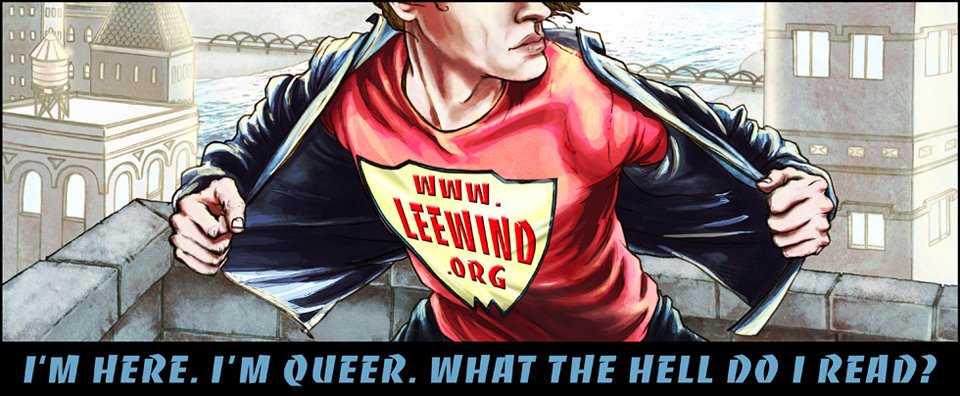960.jpg)





















.jpg)


